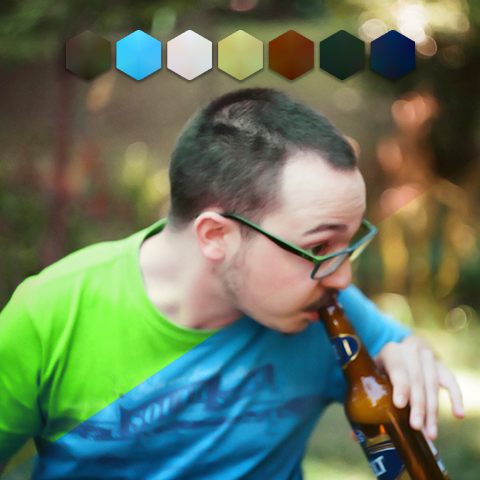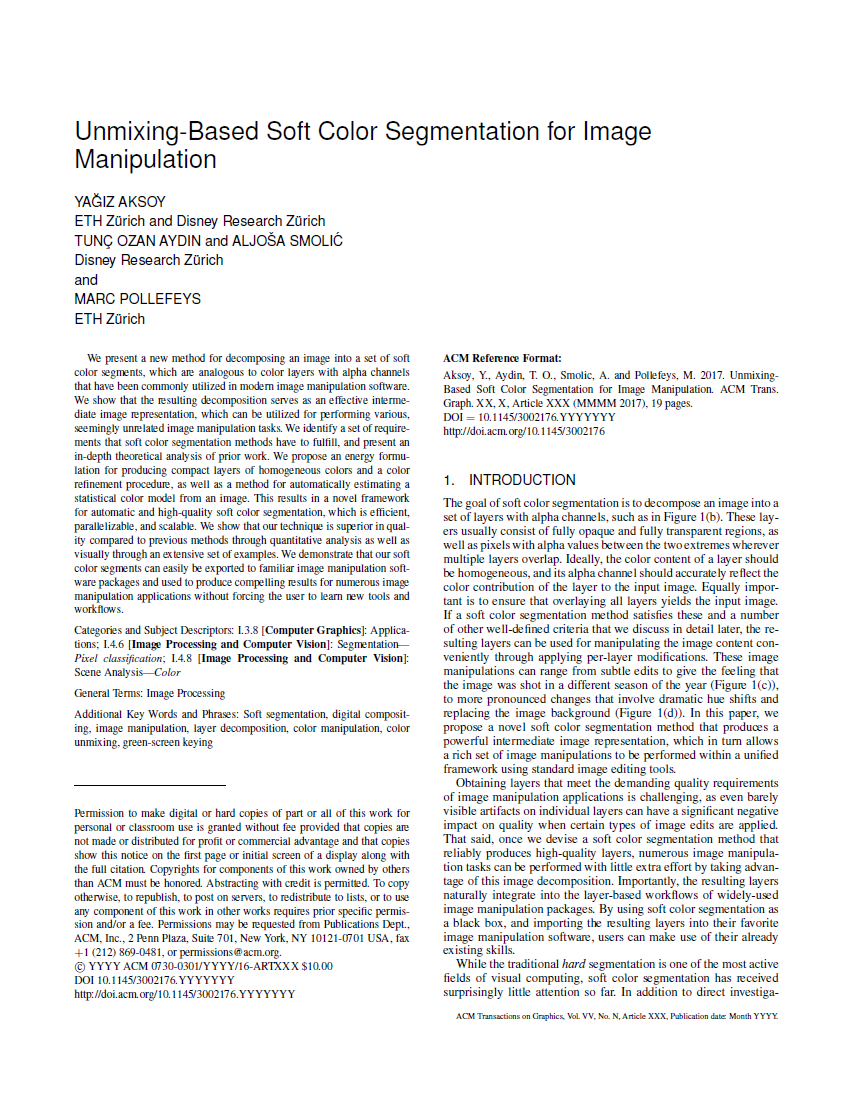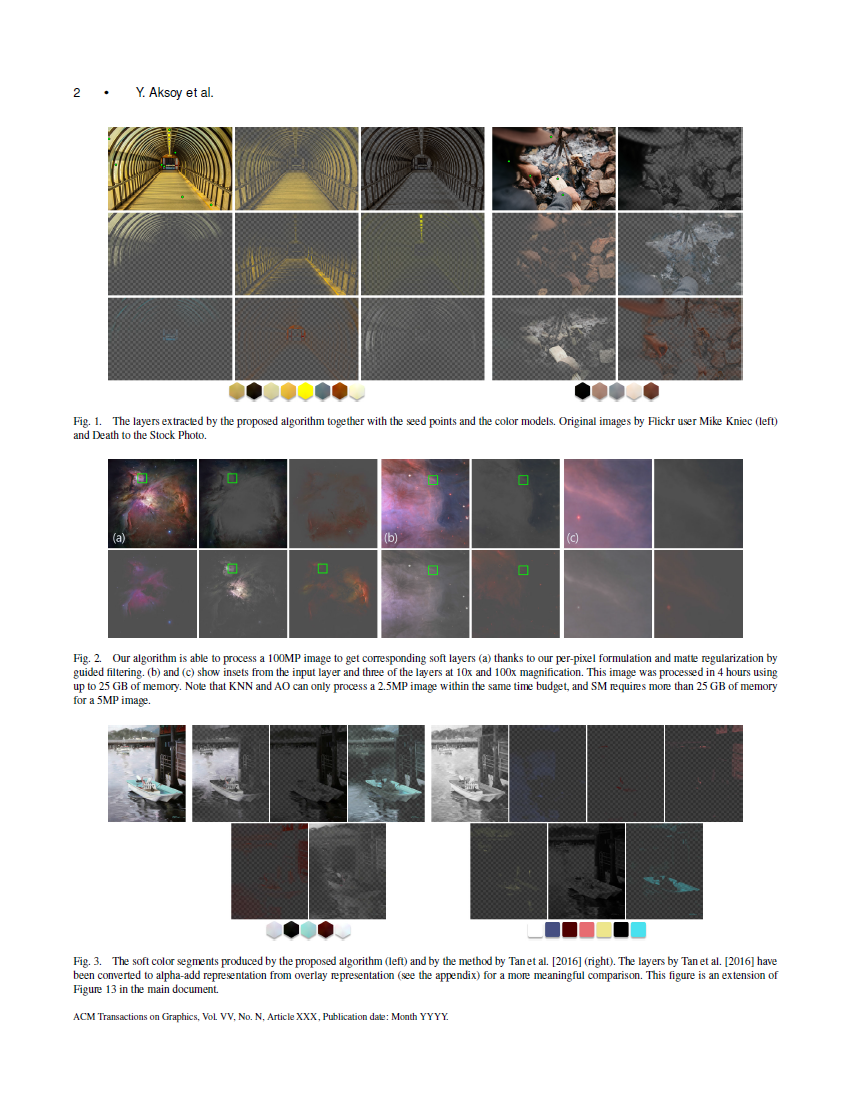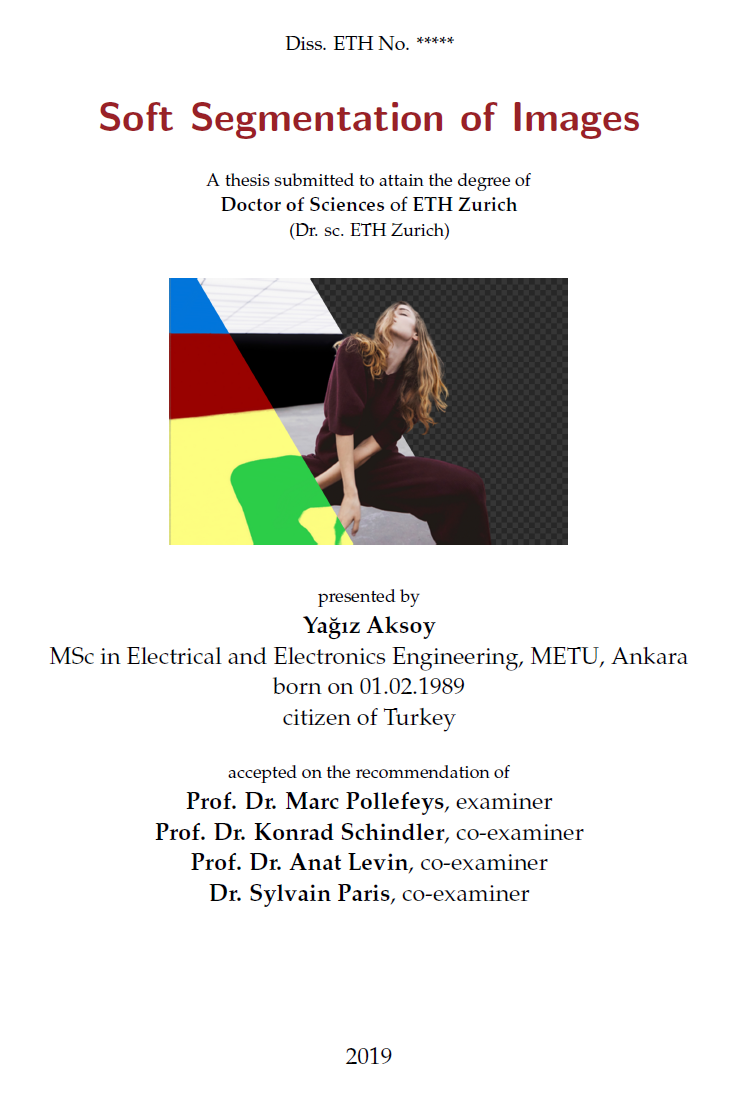Interactive High-Quality Green-Screen Keying via Color Unmixing

Major steps of our method. First, parameters of a global color model are obtained from a key frame via a simple scribble interface (a). For a different query frame (b), the global color model is refined into local color models (c) which are utilized for extracting multiple color layers via color unmixing (d). A subset of layers is then combined to get the final keying result (e). The layers can be used for compositing as well as color editing (f).
Abstract
Due to the widespread use of compositing in contemporary feature films, green-screen keying has become an essential part of post-production workflows. To comply with the ever-increasing quality requirements of the industry, specialized compositing artists spend countless hours using multiple commercial software tools, while eventually having to resort to manual painting because of the many shortcomings of these tools. Due to the sheer amount of manual labor involved in the process, new green-screen keying approaches that produce better keying results with less user interaction are welcome additions to the compositing artist's arsenal. We found that --- contrary to the common belief in the research community --- production-quality green-screen keying is still an unresolved problem with its unique challenges. In this paper, we propose a novel green-screen keying method utilizing a new energy minimization-based color unmixing algorithm. We present comprehensive comparisons with commercial software packages and relevant methods in literature, which show that the quality of our results is superior to any other currently available green-screen keying solution. Importantly, using the proposed method, these high-quality results can be generated using only one-tenth of the manual editing time that a professional compositing artist requires to process the same content having all previous state-of-the-art tools at his disposal.
Paper
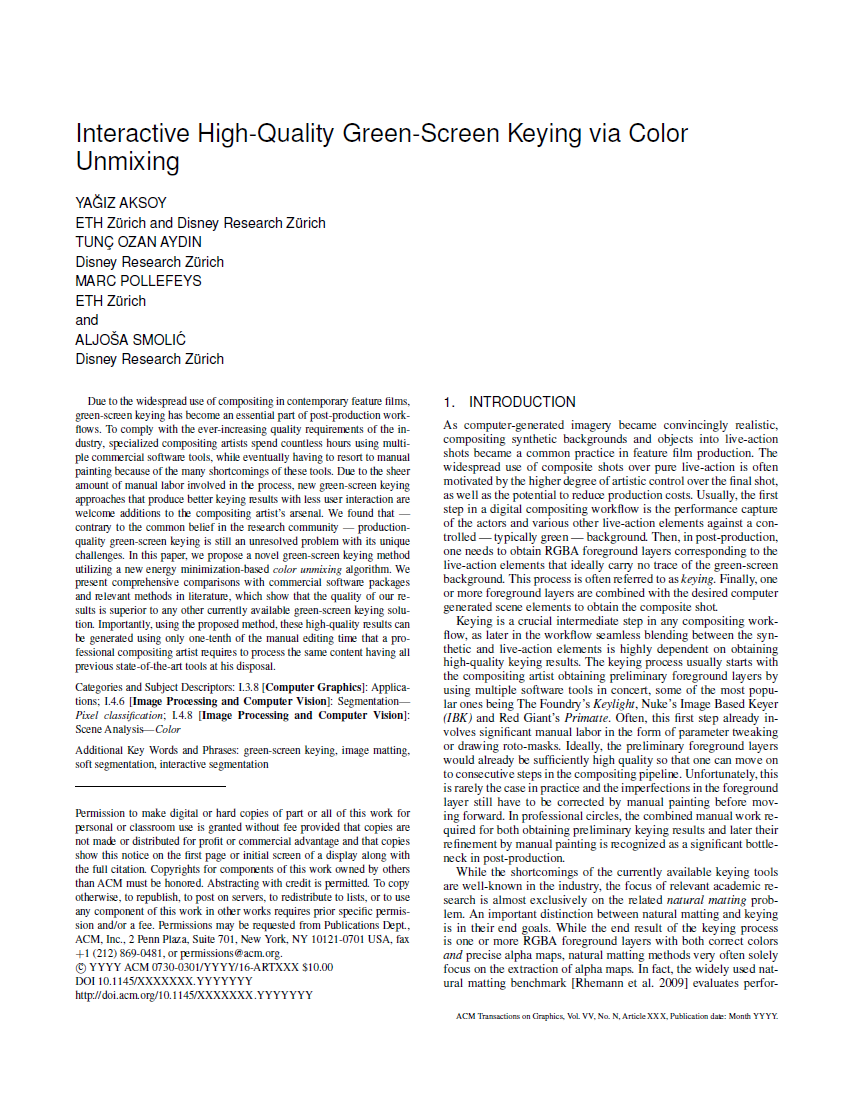 |
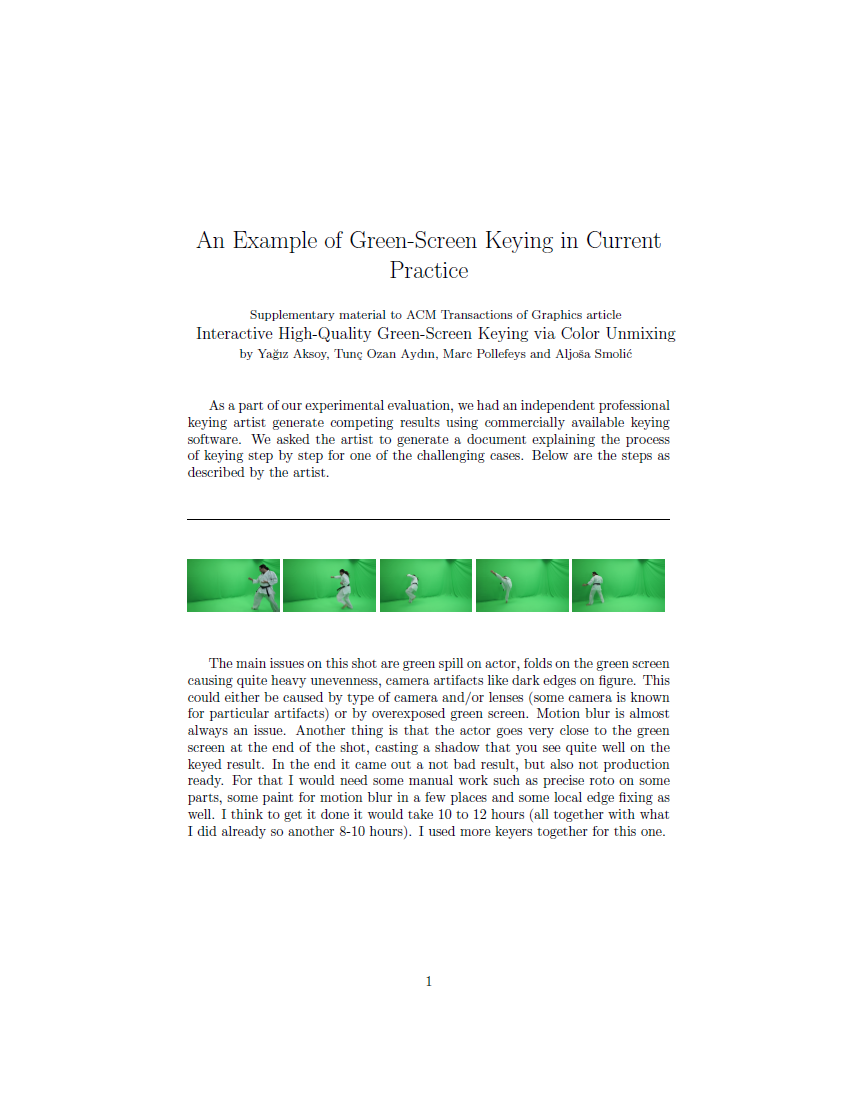 |
Paper Video
Media Coverage
Two Minute Papers - Interactive Green-Screen Keying | Two Minute Papers #174
Gizmodo UK - Disney Algorithm Makes Green-Screen Visual Effects Even Easier
TVTechnology - Disney Research Creates Keying Algorithm, AI See 'n Say
phys.org - Green-screen keying method cuts time, boosts quality in film compositing
BibTeX
author={Ya\u{g}{\i}z Aksoy and Tun\c{c} Ozan Ayd{\i}n and Marc Pollefeys and Aljo\v{s}a Smoli\'{c}},
title={Interactive High-Quality Green-Screen Keying via Color Unmixing},
journal={ACM Trans. Graph.},
year={2016},
volume = {35},
number = {5},
pages = {152:1--152:12},
}
Data
| Input sequences (780MB) | Keying results (255MB) |
Related Publications

|
PhD Thesis, ETH Zurich, 2019
|
